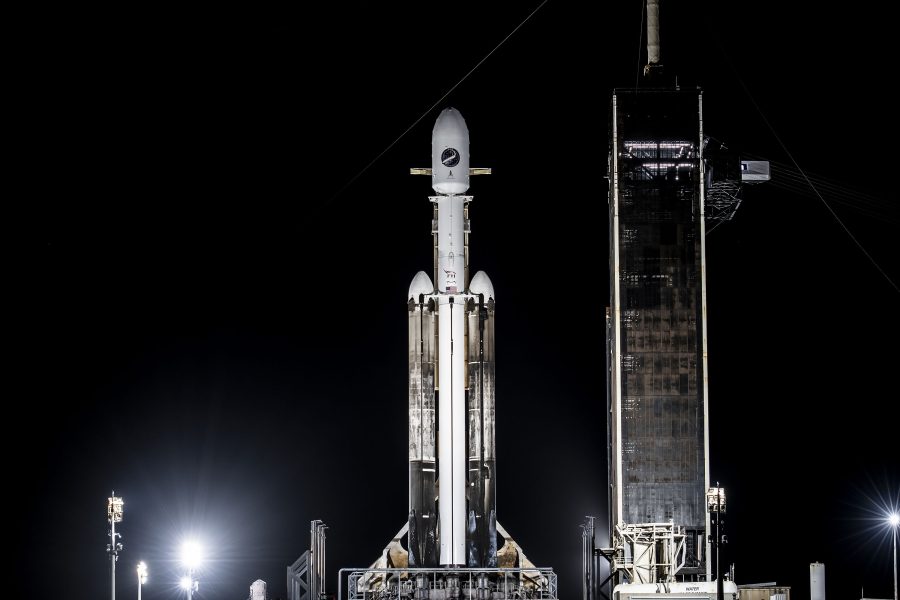
Space Force Faces First Ever Budget Cut in 2025, Driven in Part by Fewer Launches (Image Credit: airandspaceforces)
The Space Force budget could be headed for its first ever dip in fiscal year 2025, as the service unveiled a $29.4 billion request March 11, a 2 percent drop compared to its 2024 budget request.
In its first four budget cycles, the Space Force saw explosive growth as the new service established itself and brought in new personnel and missions.
Space Force Budget Requests By Year
| Year | Amount | Year-over-Year Growth |
|---|---|---|
| 2021 | $15.4 billion | N/A |
| 2022 | $18.05 billion | 17.21% |
| 2023 | $26.1 billion | 44.60% |
| 2024 | $30 billion | 14.94% |
| 2025 | $29.4 billion | -2.00% |
Air Force Secretary Frank Kendall and other leaders highlighted fewer planned satellite launches as a key reason for the smaller budget. In a briefing with reporters, Kendall pointed out that “payloads have not been ready,” leading to delays in launches and resulting in a smaller number of launches than initially planned for the fiscal year.
“Last year, we had planned 15 total space launches, and that’ll be 11 in the ’25 budget plan.” Maj. Gen. Michael A. Greiner, deputy assistant secretary of the Air Force for budget, said on March 8. “That was not necessarily due to [spending] caps or having to make tough choices, that’s really just how we look through the long-range strategic satellite launch manifest. These are the capabilities in the launches that we need, in order to get the satellites on orbit that we need as well and those that are ready to go.”
Of those 11 launches, seven will be through the National Security Space Launch program, while four will be for the Space Development Agency’s constellation of satellites in low-Earth orbit. FY25 will mark the first year of NSSL Phase 3 procurement, which is meant to increase competition and open the door to smaller launch providers through a so-called “dual-lane” approach.
Kendall also noted that under the spending caps set by the Fiscal Responsibility Act and with the readiness demands of the current force, there was only so much he could do to protect the Space Force’s budget, which is skewed heavily toward future capabilities.
“Sixty-three percent, I think, of the Space Force budget is R&D,” Kendall said. “We’re not moving as fast there as we would like to, but we didn’t have any place to make any adjustments. And I have some ability to move money between the Space Force and the Air Force, but I didn’t see any trades here that we had already done that we hadn’t already done or had talked about, did we want to make.”
Accordingly, the Space Force’s research, development, test, and evaluation (RDT&E) and procurement budgets saw a decline from the fiscal 2024 request, while operations and management (O&M) and personnel funds went up slightly.
| Account | Fiscal 2024 Request | Fiscal 2025 Request |
|---|---|---|
| Operations & Maintenance | $4.9 billion | $5.2 billion |
| Military Personnel | $1.2 billion | $1.2 billion |
| RDT&E | $19.2 billion | $18.7 billion |
| Procurement | $4.7 billion | $4.3 billion |
| TOTAL | $30 billion | $29.4 billion |
With the Space Force trimming $500 million from its research and development budget in FY25, the service is prioritizing the modernization of existing infrastructure to enhance defense and surveillance capabilities.
In particular, the branch plans to invest heavily its missile warning and tracking (MW/MT) capabilities, to the tune of $4.7 billion. That includes $2.1 billion for the Next-Generation Overhead Persistent Infrared (Next-Gen OPIR) constellation, as well as $2.7 billion for other programs like the Space Development Agency’s Tracking Layer for its Proliferated Warfighter Space Architecture in low-Earth orbit. The Space Force’s budget documents indicated they are interested in medium-Earth orbit capabilities as well.
Satellite communications will also receive significant investment. In particular, the service wants to invest a little more than $1 billion in the Evolved Strategic Satellite Communication network, for nuclear command, control, and communications, and almost $600 million for Protected Tactical Services (PTS), a jam-resistant system.
The service plans to expand its total workforce by 4 percent to 15,084, combining military and civilian personnel. That will include 9,800 uniformed Guardians, an increase of 400 over last year. That jump will come primarily through inter-service transfers. That, combined with raises in pay, Basic Allowance for Housing, and Basic Allowance for Subsistence, contributed to the Military Personnel account inching up $50 million from 2024, to a total of $1.2 billion.
The O&M budget request also went up marginally—$300 million—to a total of $5.2 billion. This budget will support the operations, sustainment, and maintenance of crucial assets, including satellites and ground-based systems, as well as a 2 percent civilian pay raise.
While the overall budget is slightly down, Kendall did note that the “pass-through”—a section of the budget not controlled by the Air Force that goes to classified intelligence programs—does have funds that will enhance the capabilities of the Space Force.
“We’re working very closely with the intelligence community, particularly with NRO,” he said, referring to the National Reconnaissance Office. “And there are dual-use capabilities that can be fielded in space that are valuable both for intelligence and military applications. And that’s why I’m saying that some of the things that are in the pass-through are beneficial to the Space Force.”
Kendall declined to elaborate, however, on whether the Space Force’s budget reduction was directly related to the pass-through increase.








